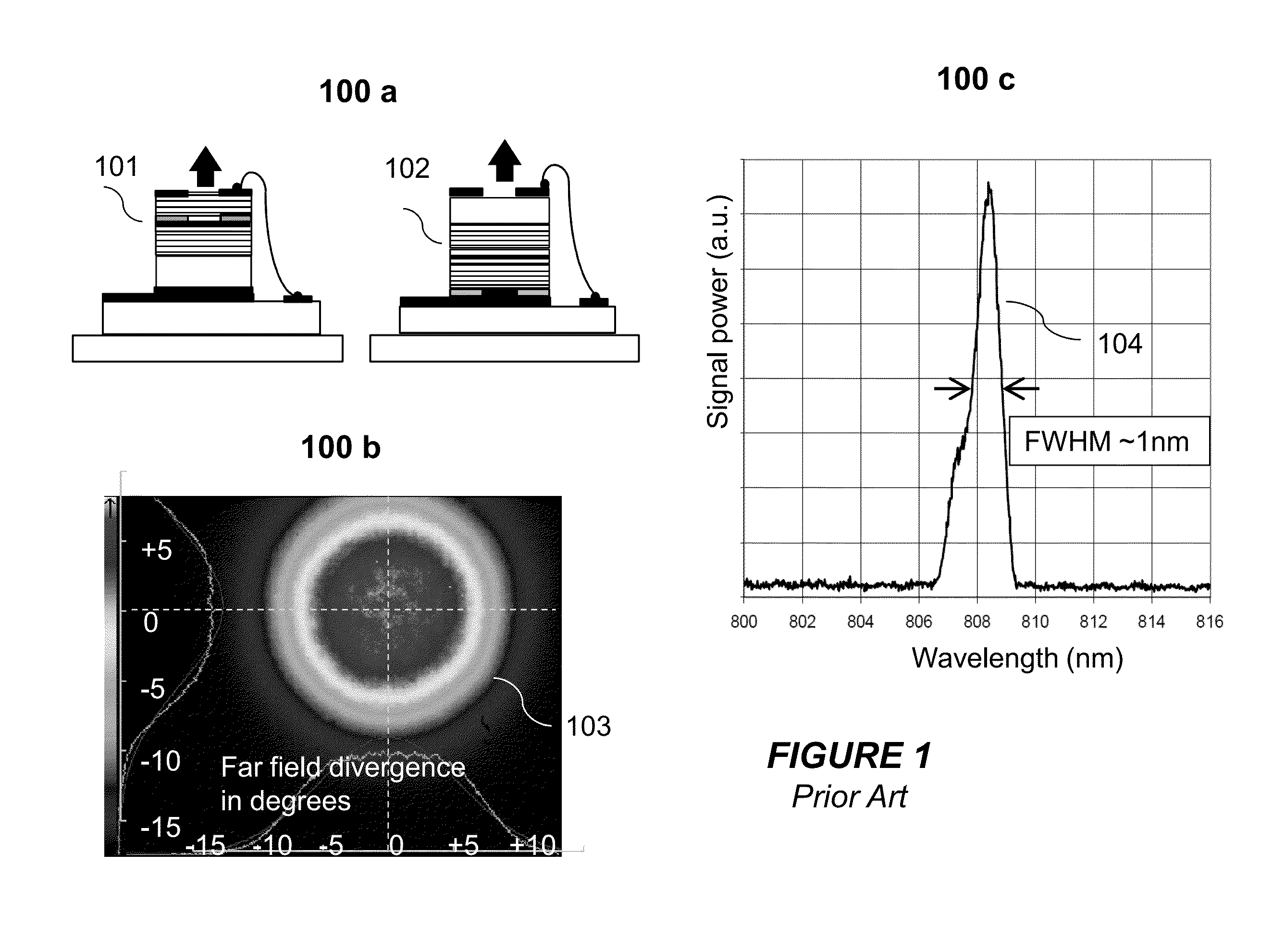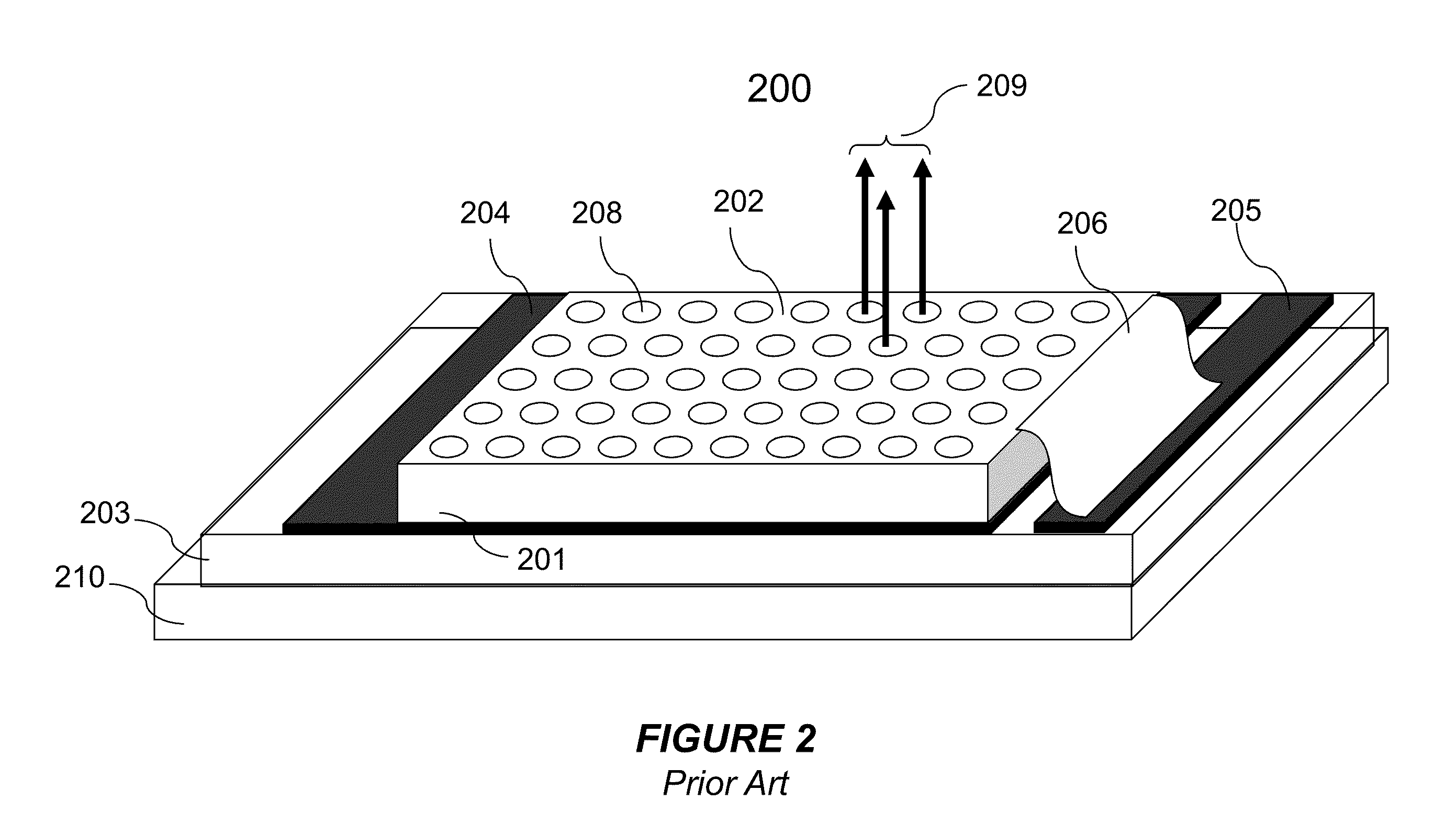Optical Pump for High Power Laser
a high-power laser and optical pump technology, applied in lasers, semiconductor lasers, solid-state devices, etc., can solve the problems of large fraction of the optical energy of flash lamps that is not utilized effectively, the wavelength range of absorption in typical gain media is limited, and the broad emission spectrum of flash lamps is a major disadvantag
- Summary
- Abstract
- Description
- Claims
- Application Information
AI Technical Summary
Benefits of technology
Problems solved by technology
Method used
Image
Examples
embodiment 1700
[0098]The simple co-linear configuration of an end-pumped high power laser described earlier in reference with FIG. 16 is extended to configure a dual end-pumped high power laser shown in FIG. 17. Although the basic principles of the embodiment 1700 will be described in reference with a solid state gain medium for example, a Nd:YAG crystal having a fundamental emission at 1064 nm, the same principles may be extended to other types of gain media within the broad framework. More specifically, a high power laser comprising a gain medium 1712 is placed in a laser resonant cavity constructed using a high reflectivity reflector 1713 and a partially reflective spherical curved mirror 1714 for the laser output 1720. Both ends of the gain medium are antireflective at 808 nm, coinciding respectively with the laser fundamental mode and pump wavelengths in this exemplary configuration
[0099]Two VCSEL array pump modules 1701 and 1721 pump the gain medium at its two ends. More specifically, the pu...
embodiment 1800
[0100]Another configuration for applying dual-end pumping is represented in an embodiment shown in FIG. 18. The embodiment 1800 has similar elements and functions substantially similar to the one described in reference with FIG. 17 except for the laser cavity design. The elements that are identical in FIGS. 17 and 18 are labeled using similar reference numerals and have been already described in reference with FIG. 17. Same description will not be repeated in reference with FIG. 18 for brevity. The embodiment will be described in reference with a solid state gain medium but the principles are equally applicable for other types of gain media.
[0101]In particular, a solid state gain medium 1812 is placed in a resonant cavity comprising a first reflector 1813 having a high reflectivity and a second spherical reflector 1814 that is partially reflective to transmit the laser output 1820. In this embodiment, the lasing path represented by the double headed dashed arrow, is defined by placi...
PUM
 Login to View More
Login to View More Abstract
Description
Claims
Application Information
 Login to View More
Login to View More - R&D
- Intellectual Property
- Life Sciences
- Materials
- Tech Scout
- Unparalleled Data Quality
- Higher Quality Content
- 60% Fewer Hallucinations
Browse by: Latest US Patents, China's latest patents, Technical Efficacy Thesaurus, Application Domain, Technology Topic, Popular Technical Reports.
© 2025 PatSnap. All rights reserved.Legal|Privacy policy|Modern Slavery Act Transparency Statement|Sitemap|About US| Contact US: help@patsnap.com



